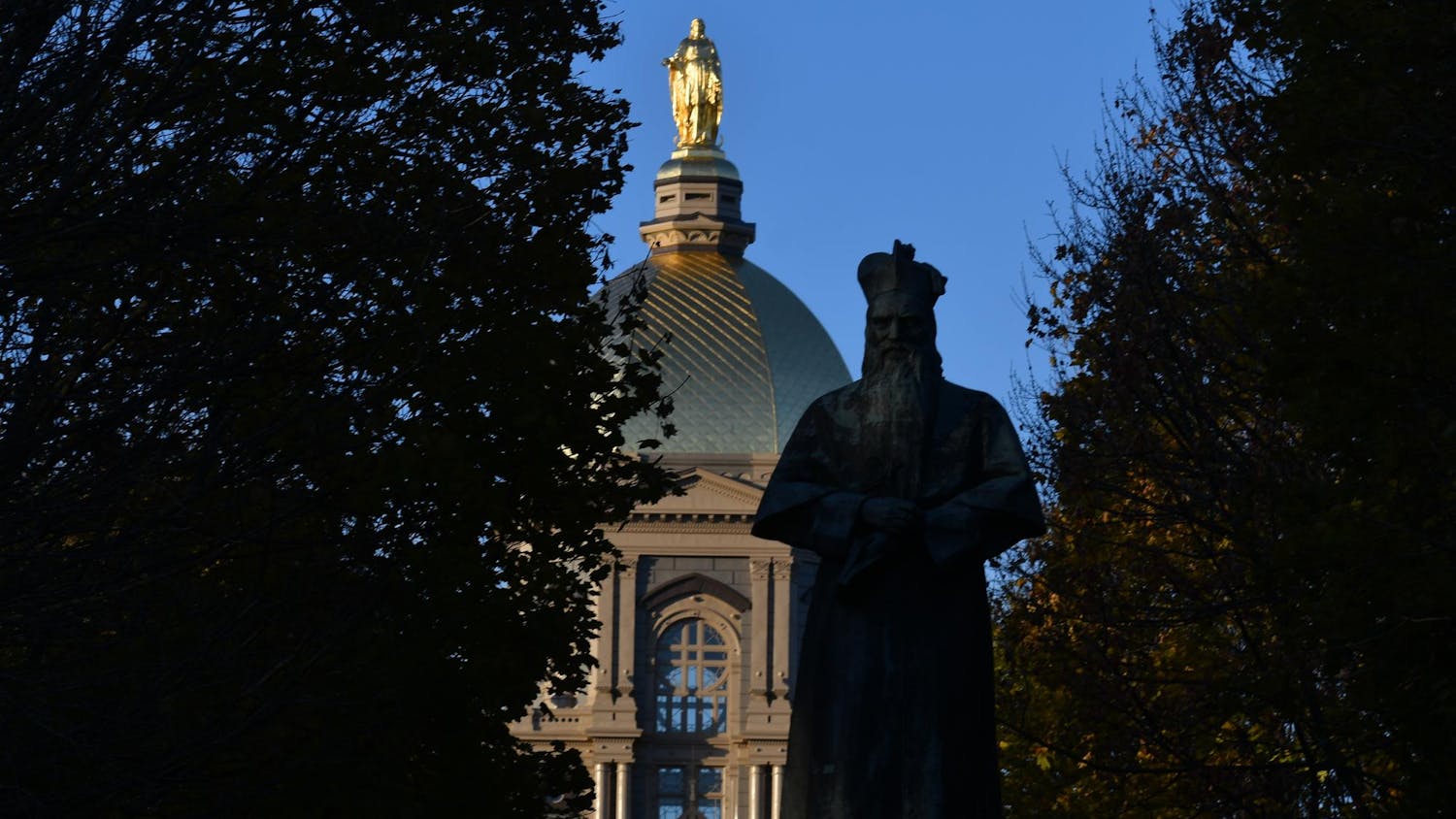The golden dome is no longer the only rooftop catching eyes on campus.
This summer, a green roof was installed on top of Notre Dame’s Joyce Center. Featuring nearly two acres of vegetation at 79,096 square feet, it is the largest green roof in Indiana, a University press release said, and is thought to be the largest at any college or university in the United States. It is the University’s fifth living roof, joining those on the Duncan Student Center, Corbett Family Hall, O’Neill Hall and Morris Inn.
Greg Seiss, the vice president of Midland Engineering — the contractor that spearheaded the project — said the green roof was installed as part of a campus-wide sustainability initiative.
The initiative aims to reduce Notre Dame’s carbon footprint by more than half by 2030. It was enacted by University President Fr. John Jenkins in 2015 in response to Pope Francis’ encyclical “Laudato si’,” which calls people to take action against environmental degradation.
Seiss said the green roof helps conserve thermal energy and direct water away from the University’s sewer systems.
“You have an insulating factor with the green roof [and] you also reduce the amount of rainwater that runs off into the drainage,” he said.
The vegetation will also protect the roof, Seiss said, extending its lifespan by up to 300 percent — allowing it to last 20 to 40 years.
Both structural and aesthetic considerations influenced the design of the roof, Seiss said. The green roof hosts about 25 species of plants, with the type of plants and thickness of the soil specifically tailored to the building’s infrastructure.
“Structural engineers basically designed the thickness of the trays based on how much weight that the building can hold,” Seiss said.
More than 30 thousand individual trays of plants make up the green space of roof, Seiss said. Both the colors of the vegetation, which can change seasonally, and the walkway were chosen to complement other buildings on campus.
Seiss said the large size of the roof and the complexity involved in the installation made it a unique task for Midland Engineering.
“There [were] over 25 thousand man-hours involved in this job,” he said. “... We had to start in April and finish before the first football game.”
The soil trays, plants and other building material were brought up to the roofs via crane, he added. On busy days, there would 25 to 30 workers on the roof at one time.
“Forty truckloads of material ended up coming in,” he said.
Seiss said the roof is not open to the public but is visible from higher floors of the Notre Dame Stadium.
His favorite feature of the roof is the west plant bed, he said.
“Everyone up here in the stadium can see it,” he said.
Notre Dame installs green roof on Joyce Center
The Joyce Center’s new green roof, pictured, is the largest of its kind in Indiana. Notre Dame installed the living roof over the summer as part of its campus-wide sustainability initiative.
The Joyce Center’s new green roof, pictured, is the largest of its kind in Indiana. Notre Dame installed the living roof over the summer as part of its campus-wide sustainability initiative.









